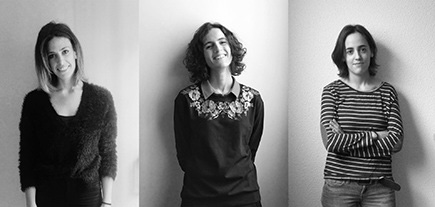The winners of the Concéntrico 02 design competition have been David Bergasa Pascual, who submitted "Cuña Urbana" [Urban Wedge] project for the pavilion, and the team formed by María Beni Ezquerro, Isabel Castillón Gomez and Rocío García Samaniego, with their "Hortus Conclusus" [Locked Garden] project, sent in for the installation of Ruavieja's courtyard.
CUÑA URBANA by David Bergasa Pascual
The pavilion designed by La Rioja's architect parts of a cube which has been diagonally cut, resulting in a closed wedge and an open slipway. This ephemeral pavilion will be used as an appealing element to the citizens thanks to its strategic position and striking color, besides serving as meeting point and beginning spot of the tour organized around the city center.
According to the jury, "The project has been selected for its unique character and rotund geometry that responds to the use of the Pavilion as a landmark of the festival. It is integrated in the surrundings by generating new spacial readings and crating new activity in the square, which is differently transformed at day and night. It provides an innovative and integrated solution to the graphic location information of the festival. the development of the proposal shows its constructive and structural viability."
The second prize for the design of the pavilion has been awarded to David D.Élices Kolmerschalg, and the third to Octavio Pérez Monfort.
HORTUS CONCLUSUS by María Beni Ezquerro, Isabel Castillón Gómez and Rocío García Samaniego
The installation, which will be set up in a Logroño's centric courtyard, has been inspired by the medieval gardens, evoking the cloisters of the Middle Ages. The intervention proposes an isolated space from the outside world through a wall so that the patio becomes a vegetable oasis of native species. This idea is materialized through vertical planes printed with colorful vegetable forms. The screens will thus modify the spatial perception of the courtyard.
The jury has stated that "the project has been selected by the playful, dynamic and poetic nature of the intervention, which is solved with simple but rich in forms and sensitive pieces. New routes are generated in the "Inventory of Species" that link humans and vegetation with surprise and irony."





































